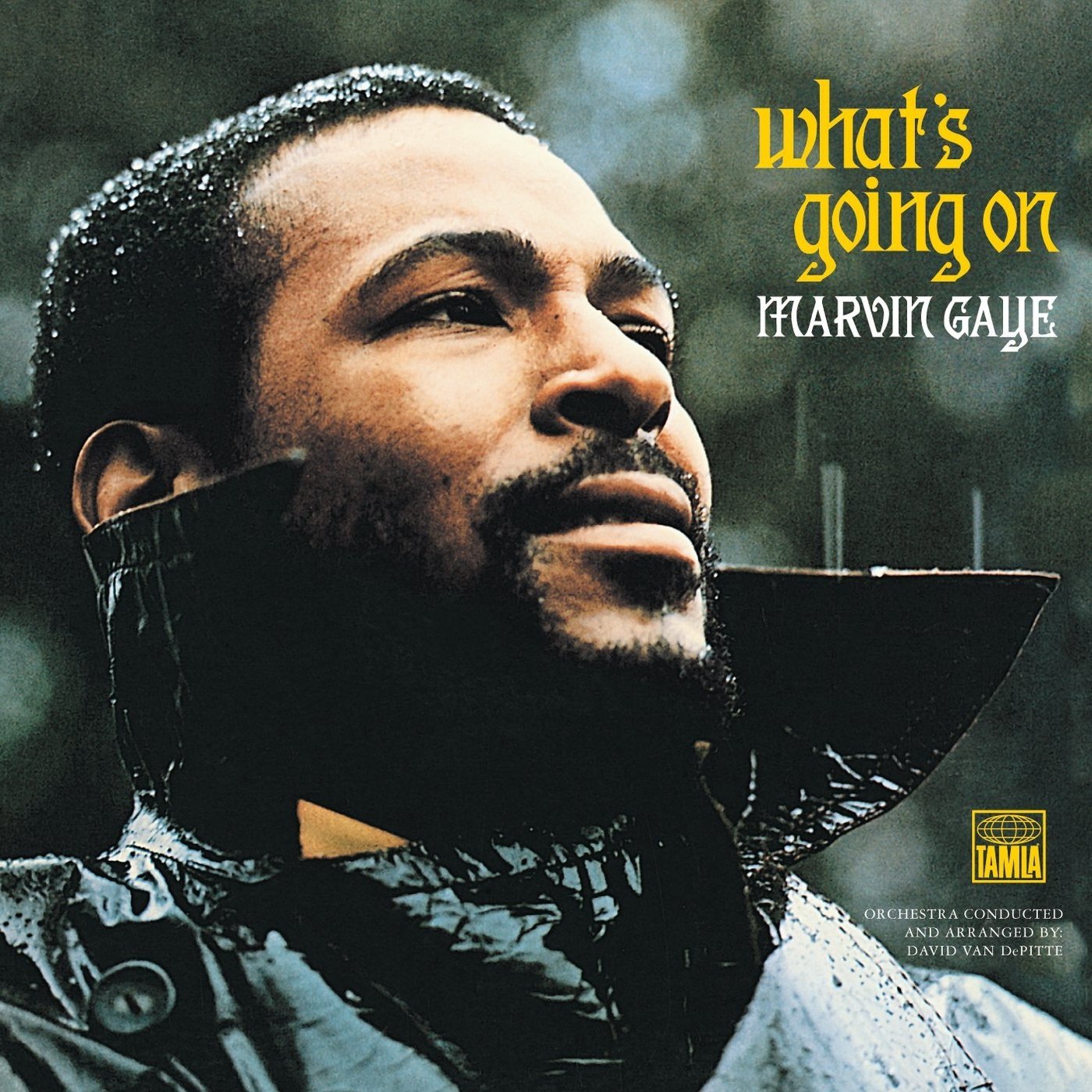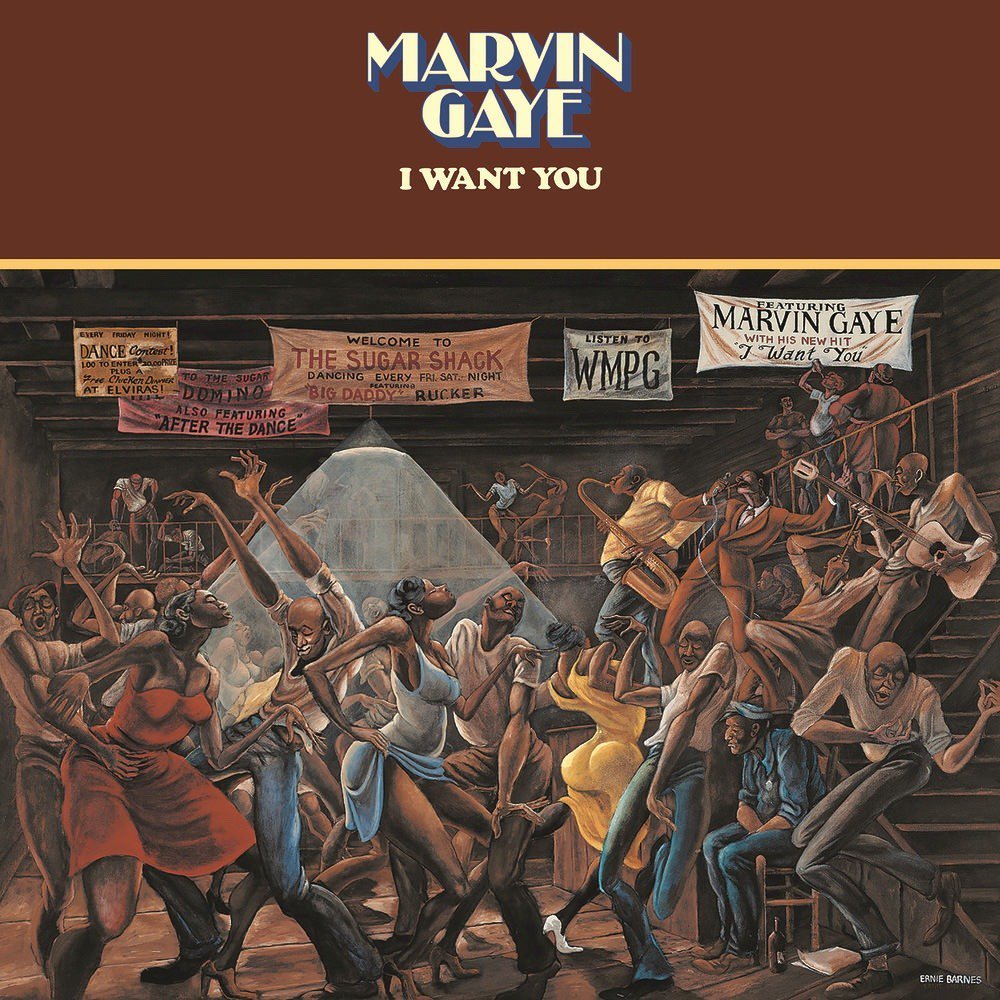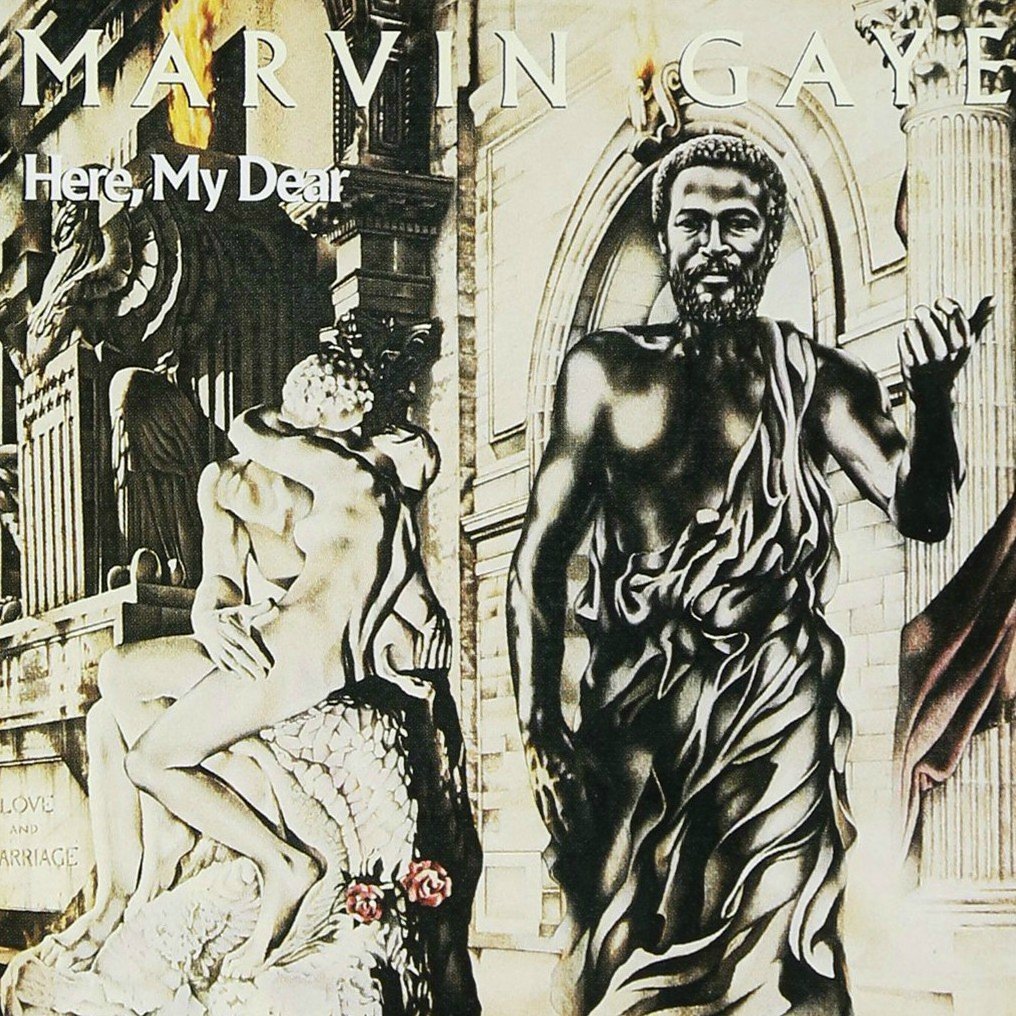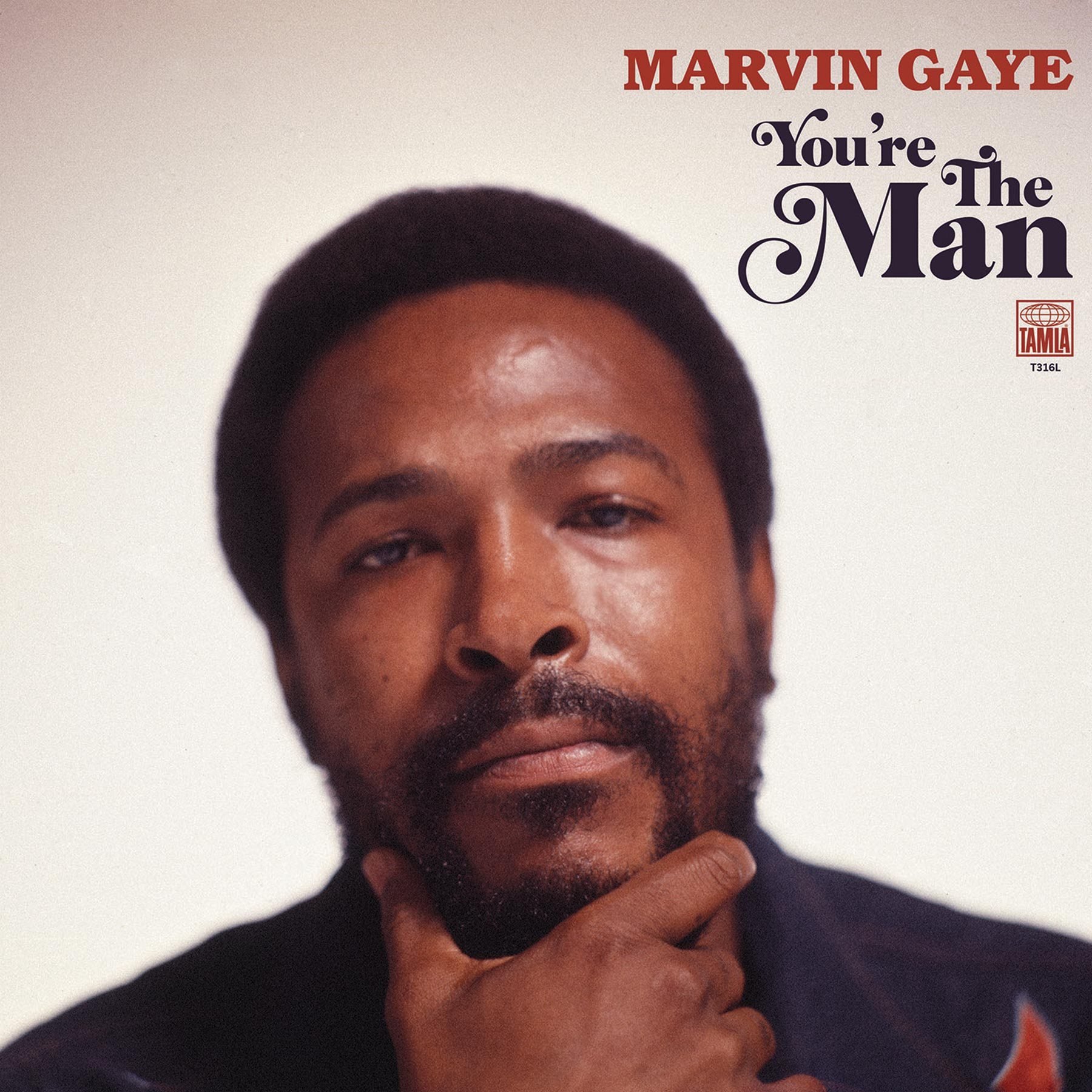Happy 40th Anniversary to Marvin Gaye’s final studio album Midnight Love, originally released October 1, 1982.
Near the end of the Seventies, a long-standing battle between salvation and wickedness rocked Marvin Gaye’s core. While solidifying his place as one of soul music’s golden brass, he wrestled with immense tragedy, anchored by financial woes with the IRS, a tumultuous divorce from his first wife, Anna Gordy, a crippling cocaine addiction, and his stormy marriage with Janis Hunter. Disillusioned, he left his stomping grounds in Los Angeles and found disastrous refuge in Hawaii, where he resided in a bread van and worked on an aborted disco-styled project entitled Love Man. Not long after, he fled the States and moved to London, in an attempt to avoid his growing strains with the IRS. The once-adorned “Prince of Motown” reached his darkest hour, but his art grew purely esoteric.
Blending his philosophical muse with worldly impulses and spiritual insight, he tapped into his pathos for inspiration and unfurled life’s complexities onto two of his finest canvases, 1978’s Here, My Dear and 1981’s In Our Lifetime? Despite this liberating period of creativity, the public and critics weren’t prepared. Motown Records wasn’t either. Gaye’s penchant for unbridled artistic expression failed to attract Motown’s commercial virtues and ultimately made for a toxic partnership between the two. Tensions came to a devastating head when Motown disrupted his spiritual and philosophical cosmos during the tedious creation of In Our Lifetime? in 1980 and caught wind of the unfinished work. The storied label eventually revised, defaced, and rush-released it without Gaye’s consent at the top of 1981. Betrayed by their nefarious decision to do so, Gaye asked Berry Gordy to nullify his contract with Motown, capping their 20-year association.
For Gaye, his personal exile from London to Ostend, Belgium in early 1981 was a cathartic move. With chaos wedging his personal life and career, he reacquainted himself with Belgian concert promoter, Freddy Couseart, who he’d previously met during an embattled, two-year residence in London. As Gaye soaked up the secluded winds of Ostend, Couseart strived to help Gaye refocus from the turmoil and rebuild his career. Slowly, but surely, the healing process shaped into something more fruitful for Gaye, as he sought a new lease on his musical journey. He accepted a deal at CBS Records and began scraping material together for his next endeavor.
The resulting album, 1982’s Midnight Love represents Gaye’s commercial retreat from the multilayered insularity of Here, My Dear and In Our Lifetime? Structurally and musically, Midnight Love is very much a product of the black crossover explosion that occurred during the early Eighties. Finely-tooled fusions of R&B and pop styles were gaining large recognition, and for Gaye, who hadn’t scored a hit since 1977’s Live at the London Palladium and its lone single, “Got to Give It Up,” appeasing the mainstream that passed over his outward-aligned triumphs in favor of the carnal indulgences of his former glories roamed his creative mind. His signature brand of textured funk and elegant soul molded into a sleeker, heavily processed style, crackling with Jupiter 8 synth blips and urgent Roland TR-808 throbs. Sonic stabs of reggae, synth-pop, and new wave are thrown into the stylistic palette, for good measure.
There’s no overarching narrative framing its musical core. His conflicting concerns with secular and spiritual matters are still present, but slightly subdued. Flashy romps on the flesh are loud and clear, front and center. Even when Gaye flirts mildly with introspection and sacredness, the personality doesn’t come off nuanced or deep. This direct approach of Marvin Gaye’s artistry is consciously desperate as much as it’s heartily organic.
Nonetheless, the compelling aspect that makes Midnight Love hold together so well is Gaye’s indelible vocal mastery. Expressive, vulnerable, and deeply versatile, Gaye effortlessly sculpts and flexes every inflection, tone, and texture of his voice, while impressively adapting it to the varied lyrical, technological, and melodic flourishes of the music. Given all of his personal strains, it’s quite remarkable, chilling even, that he managed to retain a certain classic and contemporary quality to his timeless voice. Proof of this undeniable characteristic is evident on none other than the album’s emblematic lead single, “Sexual Healing.”
A masterful distillation of Gaye’s newfound fascination with reggae and his admiration for the doo-wop generation that influenced his overall artistry, “Sexual Healing” (US pop #3, R&B #1) remains both an otherworldly mystery and revelation. With its chilled-out, taut drum programming and irresistible reggae-informed funk, Gaye sets his unmistakably sweet tenor in high gear, creating a euphoric world of lustful salvation that never lessens. During an era when R&B artists traded subtlety for vulgarity, Gaye compellingly uses the inner conflict of his divided soul and makes it precious and infectiously clever. The construction of its inviting rhythms and Gaye’s vocal work appears so simple, but as you peel back the layers of its details, it’s a wonderfully performed masterstroke of precision, class, and control.
The charm of Midnight Love isn’t laser-beamed on one mere highlight, though. Gaye takes cues from the eccentric whims of Rick James, Cameo, and Prince for “Midnight Lady,” an elastic funk ode to the luxurious nightlife, those vivacious “super freaks,” and sexual debauchery. The freak-funk precision continues with the thematically similar “Rockin’ After Midnight,” an up-tempo jam detailing Gaye’s erotic innuendos during the nightlife. The sly and silky soul of “Turn on Some Music” rouses some of the sensual fire of I Want You and even Let’s Get It On, with Gaye using juicy double entendres that reveal his tortured side.
He shows his love to the then recently-departed Bob Marley and the beauty of women around the world with the skittery “Third World Girl,” weaving together faux-reggae rhythms with glitzy synth-pop touches. The closest he comes to waxing his passion for humanity and spiritual devotion here is found on the earnest, “Joy” (US R&B #78) and the inspirational Gordon Banks-written jam “My Love Is Waiting.”
The album’s lone ballad, “’Til Tomorrow” (US R&B #31) updates the lovelorn pleas of Gaye’s classic blue light basement staples, “Baby, I’m For Real” and “Distant Lover” and brings the album’s erotic tenacity to an emotionally-charged height. Given Gaye’s tour-de-force vocal intensity throughout the ballad, “’Til Tomorrow” may just be the only song on the album that equals the transcendent magnificence of “Sexual Healing.”
Listen to the Album:
Unfortunately, the tragedy that connects Midnight Love to Gaye’s tumultuous life resides in its triumph. After experiencing such tranquility in his personal life during his two-year exile in Belgium, where he recorded the bulk of Midnight Love, Gaye moved back to the ravaged States to tend to his ailing mother and ride the waves of his labor. The commercial concessions that Gaye reached with Midnight Love won him immense mainstream appeal, critical raves, and one of the biggest hits of his career with “Sexual Healing,” which he instantly figured would be a hit when he wrote it.
The double platinum-selling album reached the top of the Billboard charts, peaking at #7 and #1 respectfully on its pop and R&B chart. His public visibility increased profoundly, with him appearing on Soul Train and the American Music Awards, while turning in memorable performances in 1983 during the NBA All-Star Game at California’s Forum arena, where he blew everyone away with his smooth rework of the “Star Spangled Banner,” and Motown 25: Today, Yesterday, and Forever. For Gaye, the greatest accomplishment that came from Midnight Love’s commercial fruits was taking home his first and only Grammy prizes for “Sexual Healing” in the R&B field, after feeling a sense of abandonment from the Recording Academy for overlooking his previous milestones.
Enjoying this article? Click/tap on the album covers to explore more about Marvin Gaye:
However, the flesh raged closer to his psyche and spiritual soul. Later in 1983, he embarked on his final tour in support of the Midnight Love album, entitled The Sexual Healing Tour. What seemed like a promising toast to Gaye’s newfound success and celebrity turned into a chaotic disaster of troubled soul man excess. His addiction to cocaine and worldly vices worsened, and it would only come to a head on April 1, 1984, when he was shot and killed by his father in his parents’ home, just a day shy of his 45th birthday.
Like much of Gaye’s timeless canon, Midnight Love’s urbane zest and immediacy loomed large in the circles of black popular music. In 1998, Columbia Records and its catalog division, Legacy Recordings commemorated the 15th anniversary of its initial release and lasting artistic influence with a deluxe reissue entitled, Midnight Love & the Sexual Healing Sessions. The package served as an exhaustive look inside Gaye’s tumultuous creative process during the making of the album. Countless artists and producers have lifted from its musical hallmarks or interpreted the songs over the years. Perhaps the most memorable nod to Midnight Love came unexpectedly in the blistering summer of 2001, when rapper Erick Sermon cleverly lifted “Turn on Some Music” for his hit, “Music.”
While it marked a clear deviation from the daring idiosyncrasies of his former masterpieces, Midnight Love stands as a respectable testament to Gaye’s indomitable artistry and a bittersweet coda of his embattled career. There are clues throughout its musical charms that indicate the state of his mind, soul, and spirit during its creation, but what’s even more riveting is that they also hold the keys to possible paths he would’ve explored in his future. What remains uncertain, however, is how far he would’ve gone. In a nutshell, this mystery underscores the myth and madness of Midnight Love and Marvin Gaye’s genius.
LISTEN:





